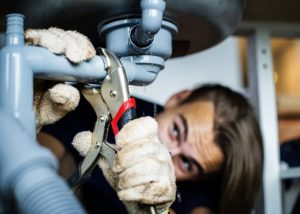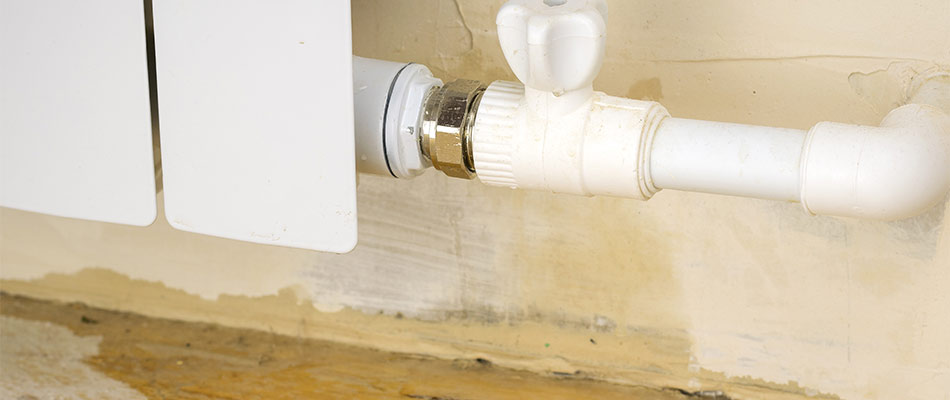This great article listed below relating to Detecting hidden plumbing leaks is indeed informative. Don't miss it.

The moment you locate a leak, calling your plumber for fixings is the most effective remedy. Nevertheless, some little water leaks might not show up. Right here are some hacks that assist if you can not find it with your naked eyes.
Early discovery of dripping water lines can mitigate a prospective calamity. Aside from saving you money, it will reduce the irritation and aggravation.
Examine Water Usage
If you detect abrupt changes, in spite of your intake being the same, it implies that you have leaks in your plumbing system. An unexpected spike in your costs shows a fast-moving leak.
On the other hand, a constant rise every month, even with the same routines, reveals you have a slow leak that's additionally gradually rising. Call a plumber to extensively examine your residential or commercial property, especially if you really feel a warm area on your floor with piping beneath.
Examine and Assess the Scenario
Home owners must make it a routine to check under the sink counters and also even inside closets for any bad odor or mold development. These 2 warnings suggest a leak so timely focus is required. Doing regular examinations, even bi-annually, can save you from a major problem.
Check Out the Water Meter
Every house has a water meter. Checking it is a surefire way that aids you discover leakages. For beginners, shut off all the water resources. Guarantee no person will purge, use the tap, shower, run the cleaning machine or dishwasher. From there, go to the meter and watch if it will certainly alter. Considering that nobody is using it, there need to be no activities. If it relocates, that shows a fast-moving leak. If you find no changes, wait a hr or two as well as examine back again. This suggests you may have a slow-moving leak that could even be below ground.
Asses Exterior Lines
Do not neglect to inspect your outside water lines too. Test faucets by affixing a garden hose pipe. Should water leak out of the connection, you have a loosened rubber gasket. Replace this and ensure all links are tight. If you've obtained a lawn sprinkler, it will certainly help get it professionally took a look at and kept every year. One small leakage can waste tons of water and surge your water costs.
Do a Food Coloring Examination
When it comes to water consumption, 30% comes from toilets. If the shade somehow infiltrates your bowl during that time without flushing, there's a leakage in between the tank and also dish.
Inspect for stainings as well as compromising as most appliances and also pipelines have a life expectancy. If you believe leaking water lines in your plumbing system, do not wait for it to rise.
The moment you find a leakage, calling your plumber for fixings is the best service. Some small water leakages might not be visible. Inspecting it is a guaranteed means that aids you uncover leakages. One tiny leak can squander lots of water as well as surge your water costs.
If you suspect dripping water lines in your plumbing system, do not wait for it to rise.
WARNING SIGNS OF WATER LEAKAGE BEHIND THE WALL
PERSISTENT MUSTY ODORS
As water slowly drips from a leaky pipe inside the wall, flooring and sheetrock stay damp and develop an odor similar to wet cardboard. It generates a musty smell that can help you find hidden leaks.
MOLD IN UNUSUAL AREAS
Mold usually grows in wet areas like kitchens, baths and laundry rooms. If you spot the stuff on walls or baseboards in other rooms of the house, it’s a good indicator of undetected water leaks.
STAINS THAT GROW
When mold thrives around a leaky pipe, it sometimes takes hold on the inside surface of the affected wall. A growing stain on otherwise clean sheetrock is often your sign of a hidden plumbing problem.
PEELING OR BUBBLING WALLPAPER / PAINT
This clue is easy to miss in rooms that don’t get much use. When you see wallpaper separating along seams or paint bubbling or flaking off the wall, blame sheetrock that stays wet because of an undetected leak.
BUCKLED CEILINGS AND STAINED FLOORS
If ceilings or floors in bathrooms, kitchens or laundry areas develop structural problems, don’t rule out constant damp inside the walls. Wet sheetrock can affect adjacent framing, flooring and ceilings.
https://www.servicemasterbyzaba.com/blog/how-to-detect-water-leakage-in-walls/

I was brought to that editorial on Top leak detection hacks through an associate on another web property. Are you aware of another person who is occupied with the niche? Do not hesitate to share it. I am grateful for your time. Visit us again soon.